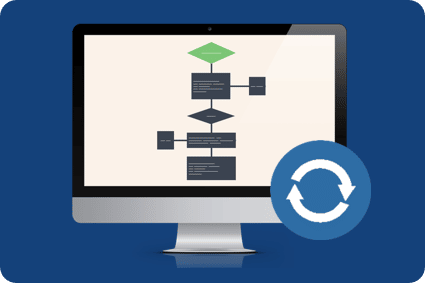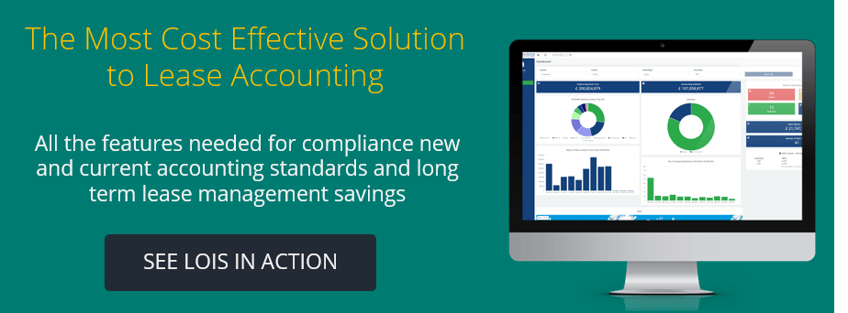Changes to IFRS 16 and FASB ASC 842 Bring Forth New Opportunities
Updated 12th June 2023 | 7 min read Published 28th July 2016

The announcement of IFRS 16 Leases and FASB’s ASC 842 will see lease accounting change on a global scale and witness an estimated US$2.8 trillion worth of lease commitments added to balance sheets.
Much of the discussion following the announcement of IFRS 16 Leases and FASB ASC 842 has centered on the impact on a company’s financial statements and the challenges associated with meeting the compliance requirements. This is not without good reason, as research carried out by EY and Deloitte suggests that companies are struggling to prepare for the new IFRS and FASB obligations. However, what the majority of discussions have failed to address are the benefits and opportunities the new standard bring about outside of compliance.
Background to the Standards
The new standards, which come into effect for most users for financial periods from the 1st January 2019 and 15th December 2018 respectively, require lessees to recognise an asset and liability arising from an operating lease on balance sheet. This fundamental change in accounting will impact a company’s reported profit performance, financial ratios, performance measures and other financial metrics.
Under current standards – IAS 17 and FASB ASC 840 (formerly known as FAS 13), operating leases are ‘off-balance sheet’ treatments that are disclosed within the footnotes of an entity’s fiscal statements. According to the IASB research, this does not take into account 85% of lease commitments globally and therefore does not give an accurate representation of an entity’s long-term financial obligations.
Up until the announcement of the new standards, leasing is unlikely to have appeared at the forefront of the boardroom agenda, nor featured at the top of the majority of a financial director’s to-do-lists – especially as the deliberations on the global leasing project have spanned a period of over a decade. It’s no wonder companies are yet to truly determine the impact the new standard will have upon their organisation.
However, with the finalisation of the new standards turning the spotlight onto a company’s leasing activity, many have been forced to escalate their contingency plan and formulate a cohesive preparation strategy. What many will soon discover is that a greater focus and visibility of their lease portfolio will give rise to economic and operational benefits.
For more updates on implementing the lease accounting standards, click here to get the latest news sent directly to you
The Benefits and Opportunities Beyond Compliance
Improved Operational Performance
The introduction of the new accounting principles has brought about a renewed emphasis and scrutiny of a company’s existing leases practices, controls and overall leasing strategy. This new focus is likely to bring leasing to the forefront of the boardroom agenda and provide an opportunity for lessees to effectively:
- Evaluate the policies for lease management, procurement and accounting,
- Make positive adjustments and pragmatic improvements to their leasing processes; and
- Identify systems gaps and inefficiencies present within IT infrastructure.
These changes will not only undoubtedly help reduce the risks associated with financial reporting and non-compliance, but, by identifying these efficiency issues, organisation are able to implement the relevant reforms that will deliver improved operational performance and drive time and cost savings.
Encourages Portfolio Optimisation
As part of the transition to the new standard, companies will have to centralise and collate all the critical lease data required for full compliance. An opportunity exists for organisations to use this exercise to perform a comprehensive 360° lease portfolio health-check in the pursuit of evaluating the performance of their entire lease portfolio. Conducting such a review would allow an organisation to get a clear understanding of exactly what they’re leasing, at what price and under what terms.
With this information at hand, companies can easily identify and resolve any issue that may be present within their lease portfolio. Whether it’s a lease that has unknowingly overrun its initial term or an agreement with the potential to be renegotiated at a more competitive rate, an accurate view of an entire lease portfolio easily identifies any opportunities for potential savings and further optimisation.
Many companies are looking towards utilising lease management software, wherein they can easily centralise their leases and to perform a more accurate portfolio analysis.
Technological Evolution
Following the announcement of the new standards, what has become apparent is that the majority of businesses are still unclear as to what the best system is for tracking and accounting for their leases.
Recent studies conducted by leading auditors have revealed numerous inefficiencies within many lessee’s technology systems:
- An EY study found that 80% of business respondents are still evaluating technology options, and that 29% currently have no system in place for tracking leases.
- PwC discovered that 68% of businesses use spreadsheets as the primary system for tracking leases and lease accounting – A method PwC has warned may be inefficient for this task.
- Deloitte’s survey revealed that only 31.3% believed their current software systems should be adequate to deal with the transition requirements.
Lessees need to ask whether they can rely on their existing system and infrastructure to be adequate for lease accounting application or do they need to implement a new system. What the majority of experts are saying is that technology will play an increasingly important role in achieving lease accounting compliance:
“Many companies have disparate systems for tracking, monitoring, and housing lease agreements.“
Sheri Wyatt, PwCP
“Following the release of both new lease accounting standards, it’s clear that creating a centralized, electronic repository of all equipment and real estate leases held should be a priority for companies with leased assets.“
Sean Torr, Advisory Managing Director and Lease Accounting Services Leader at Deloitte & Touche LLP
The danger that exists in relying solely on traditional systems – such as spreadsheet accounting – as a solution to managing, tracking and accounting for your leases, is that information silos will occur between the accountants and those who manage the lease portfolio. Data becomes inconsistent, disjointed and discrepant over time. Errors and inaccuracies occur within the data set and this makes the validation and accuracy of the critical lease data more questionable.
To help make the transition easier, companies will need a more effective way to reduce these inaccuracies within the data to ensure consistency across an entire lease portfolio. Companies should look towards specialised lease management and accounting software, which will help them achieve compliance as well as provide complete visibility of their portfolio and the ability to evaluate the impact the new changes will have on their organisation.
Compliance is Just One Benefit
Although one of the main reasons businesses will turn to such technology surrounds its ability to facilitate compliance, it is important to evaluate the additional benefits software offers; like the ability to provide greater visibility to the total health of a lease portfolio.
Having one unified platform from which to track, manage and report on all your leases means lessees are able to improve decision making and business performance through obtaining a greater understanding of their current lease obligations. Furthermore, with a holistic view of lease information, businesses are easily able to identify leases within a portfolio that require additional consideration and highlight potential savings opportunities. This helps put you in total control of your portfolio.
By having a globally centralised system for lease management, procurement and accounting, companies are able to combine the need for data gathering required for compliance to the new standards with performing a portfolio review. They have the perfect opportunity to highlight any inefficiencies, unnecessary overspends and opportunities to renegotiate leases on better terms in an effort to reduce leasing cost and drive savings alongside implementation.
A Comprehensive Solution
Innervision has developed a powerful lease management and accounting solution, LOIS, that delivers the transition tools and functionality needed to extract, validate and report on all the critical data within a lease portfolio required for full compliance to both IFRS 16 and FASB ASC 842.
The SaaS solution can be used to generate information for income statements, cash flow statements and balance sheets for both the existing and future accounting principles. What’s more, the system will also interface with the most popular ERP systems such as SAP, Oracle and other general ledger solutions.
LOIS leverages a suite of advanced ‘Business Intelligence’ technologies and reporting capability to deliver advanced accounting and portfolio insights than can be used to facilitate faster and more informed business decisions, full compliance to the new accounting standards and highlight opportunities for optimisation from both a financial and operational standpoint.
Innervision and LOIS will provide you with the keys to unlocking valuable, actionable insights from within your lease portfolio and gives you all the tools to ease the burden of compliance.
See LOIS for yourself by arranging a demo with one of our leasing experts. Find out how LOIS can help simplify your transition to new lease accounting standards, allowing you to achieve compliance alongside lease management savings.


